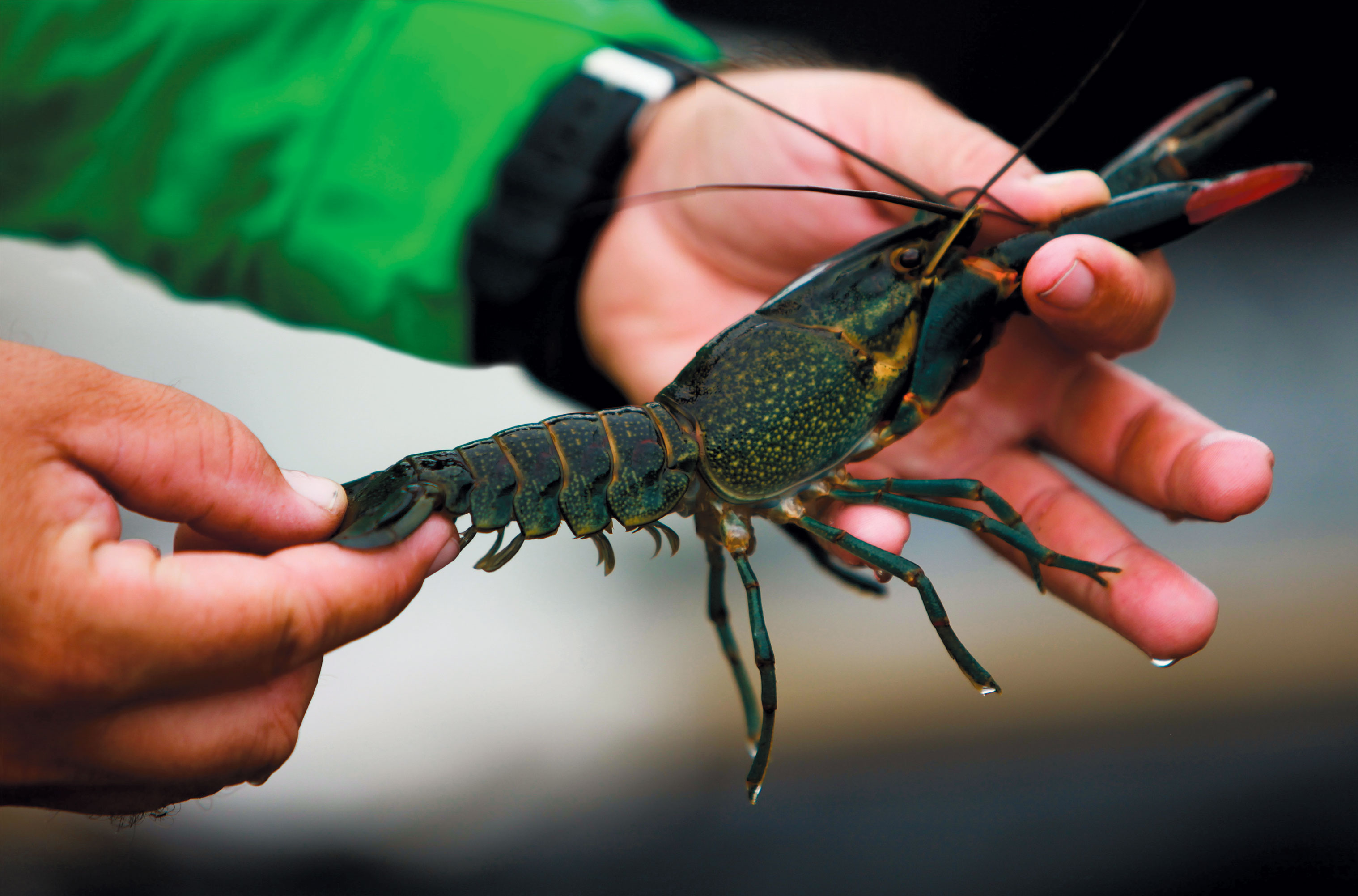

This finding simply comfirmed the overall rarity of the blue color form of crayfish. As it turned out, they never found a single blue crayfish in the trouts diet. To determine if this was the case, they captured and analyzed the stomach contents of several hundred resident trout to see what color crayfish they were eating. Many anglers have theorized that the reason you see so few blue crayfish in the wild might be due to the fact that they readily stand out and get eaten more frequently. This latter finding was important because it raised the question of whether the low population might be due to selective predation of fishes on the blue variant. Another more interesting finding was that mark-recapture studies showed that the blue crayfish never made up more than 1% of the entire crayfish population. The first was that the blue crayfish grew at the same rate as other crayfish. After trapping hundreds of crayfish from the lakes over a 2 year period and analyzing catch data, they were able to learn a few interesting results. There is even some interesting research that shows some birds that eat crayfish actually develop red coloring of various body parts due to the ingestion and translocation of astaxanthin.įor the study, researchers located blue colored Orconectes virilis or northern crayfish in a pair of Michigan lakes and wanted to compare them to their normally olive-green counterparts. It usually expresses itself as the color red if unbound to a protein, or a variety of other colors if joined to a protein. The pigment responsible for coloration in crustaceans is a carotenoid called astaxanthin, commonly found in salmon, shrimp, crustaceans, crayfish, microalgae, yeast, krill and trout. According to an older research paper (1970) I came across, crayfish coloring is likely the result of part genetics and part diet. Journal reference: ZooKeys, DOI: 10.3897/ crayfish, do they really exist? Of course they do – just seems like you don’t see many of them in the wild. I hadn’t either until this past December when I found numerous examples during drawdown on a local reservoir (see pic). The two most common threats to crayfish are habitat degradation and the spread of invasive crayfish “Both of these issues are driven by man either destroying crayfish habitat, or introducing invasive crayfish outside their native range,” he says. “When people picture endangered species, they picture pandas, tigers and whales, and they are certainly endangered, but very few people actually realise that roughly 50 per cent of the world’s crayfish are undergoing some form of imperilment,” Loughman says. Loughman says crayfish are one of the most imperilled animal groups on the planet. And if anything happens to that particular stream system in Indonesia, this guy is gone.” “It may have a broad range, or might be limited to that one stream system. “It is only known from one site,” he says. Zachary Loughman from West Liberty University, West Virginia, shares these concerns. The human population in the area is growing fast and locals are also catching the crayfish for food, which adds to pressures of habitat loss and pollution, Lukhaup says. “We have got this beautiful species that people are harvesting for the pet trade, and it may be from this tiny location, and it could be wiped out before we know anything about them,” Faulkes says. It is gorgeous,” says Zen Faulkes from the University of Texas-Pan American.īut he worries about the threats that the species is already facing. In honour of its appearance, he named it Cherax pulcher – pulcher meaning “beautiful” in Latin. Eventually, he found specimens in a creek.ĭetailed study revealed it was a new species. So Lukhaup headed to the island’s West Papua province and asked local people if they had ever seen it.

The crayfish looked like members of Cherax, a large genus occurring in New Guinea and Australia, and some dealers claimed they came from west part of New Guinea in Indonesia.


 0 kommentar(er)
0 kommentar(er)
